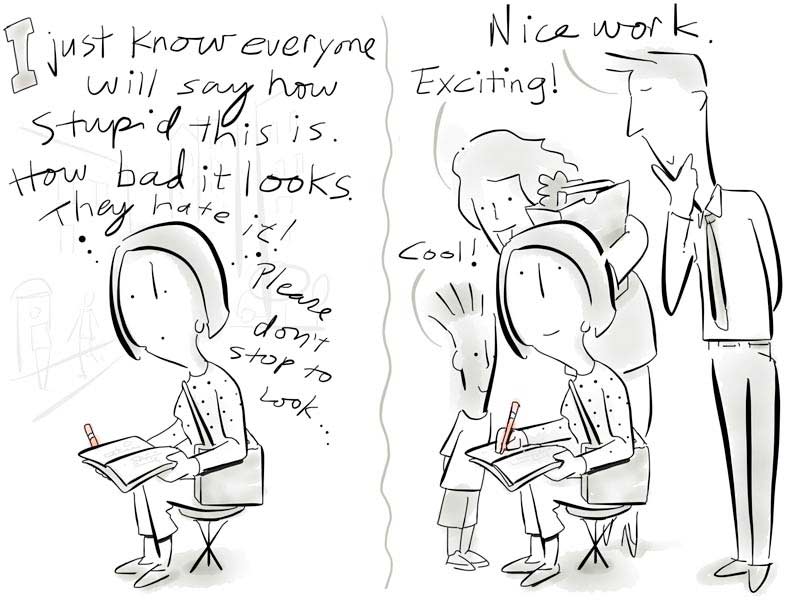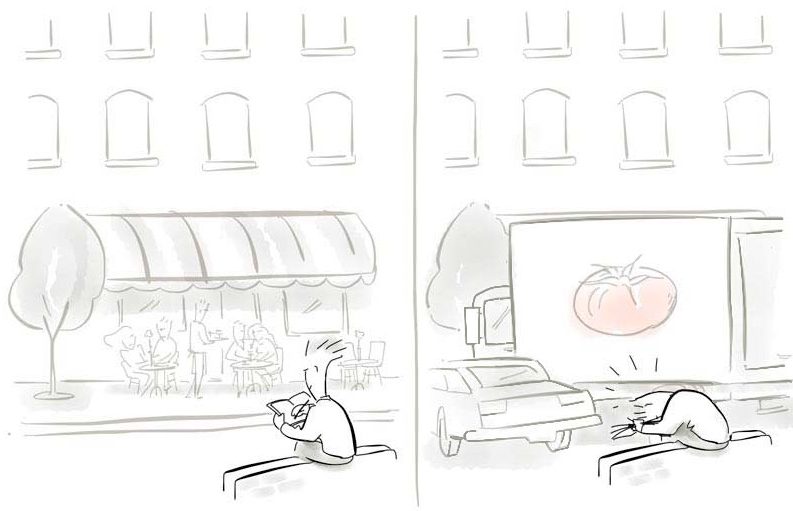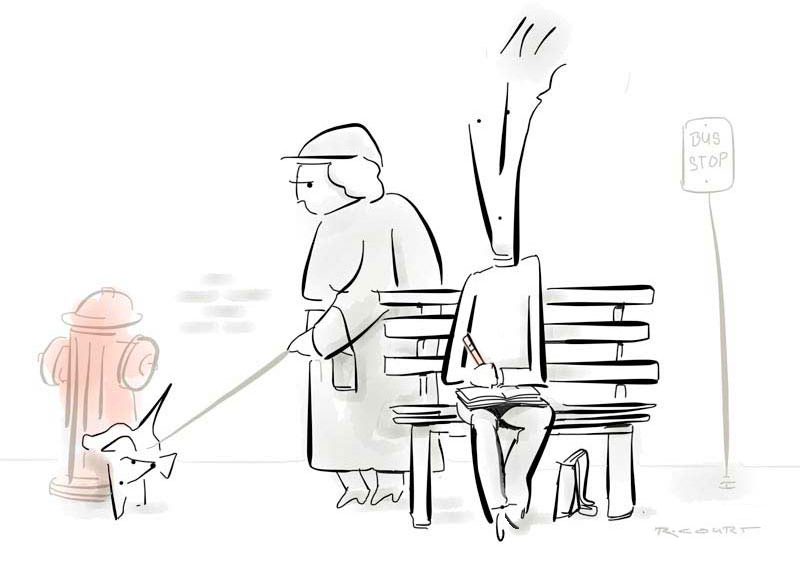Can urban sketching—the art of drawing what you observe in a city—ever become a truly comfortable and relaxing pastime for amateurs? By way of curiosity, commitment, and courage the answer is a resounding YES!
Here’s the first thing to know about urban sketching: It really is okay to sit and simply draw what goes on around you on a downtown street. Unless you’re blocking the entrance to a Starbucks, most people won’t even acknowledge your existence. They look up and only see rows of windows on an ordinary hotel building. But your inspired gaze is focused on beautiful, vintage architecture and the rhythmic patterns of fascinating lines that shape those hotel windows.
Occasionally, a curious bystander might wonder why you’re on the corner of 1st and Main, during rush hour, holding a pencil in your hand. Maybe you’ll get a suspicious glance or two from the cop making rounds on his beat. But otherwise you’re usually left alone as passersby move along the sidewalk.

By the way, be ready for it… some people will actually stop and be genuinely impressed with your symphony of lines.
Timing is everything: Expect the unexpected. When choosing a street location for making a sketch, be mindful of the curbside situation. Delivery trucks and cars have a way of rolling into parking spaces and totally blocking your view, just as you begin sketching the people at that bustling sidewalk cafe across the street.

Sketching swiftly affords you the time to capture as much of a scene as possible before inevitable traffic interruptions occur. Practice sketching only the essence of your subject first; then add all the little details if time permits.
Be prepared to end a drawing at any moment. Within seconds, the scene can change dramatically. Have fun flowing with whatever life in the city throws into your field of vision. Record that flow on the page.
Have a routine: Some urban sketchers have the habit of sweeping long, angled perspective guidelines across the page before drawing buildings. Others like to start with rhythmic vertical lines for windows and doors followed by a few basic shapes for buildings. Others like to begin with quick gesture lines that depict the action of people and automobiles. Still other sketchers simply start with bold splashes of color that capture the flavor of an urban moment.
Find a routine that works for you. A consistent way of approaching each new scene will improve your observational skills and develop your unique visual style. Strong, consistent drawing habits will build your confidence as you tackle even bigger, more complex urban sketching challenges.
Be Satisfied: Know your abilities and what you can comfortably handle when you hit the streets to draw. Make each sketch with diligence toward a satisfying outcome. Accept that it’s impossible to recreate, in exact detail, the scene in front of you. Instead, your goal is to simply lay down a quick, honest impression of it.
Draw the city with wild abandon. Let mistakes happen; they’ll become really cool flourishes in your composition. Drips, splatters, and smudges become carefree expressions as you learn to draw with all your senses.
Each time you open your sketchbook, the ups and downs of urban sketching will be waiting for you. Be persistent. Enjoy the process. And be satisfied in going home with a book filled with memories of another day lived and experienced.
Travel light, be brave, and sketch like nobody’s watching!
Rob Court
Latest posts by Rob Court (see all)
- Drawing With Friends - April 11, 2022
- Frozen in Time: Cellphone Users as Models to Draw - April 8, 2022
- Getting Out & Getting Real - June 20, 2021
- Life Lines: Sketching the Unseen World of Movement - June 20, 2021
- The Ups & Downs of Urban Sketching - May 9, 2021
